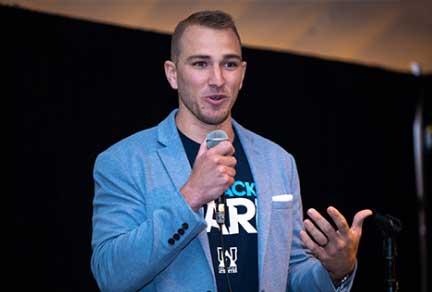Advancing radiopharmaceutical development: Integrated clinical trial expertise mitigates risk
Related Insights
Blog
Tightening rules, global trials: Sponsors’ concerns at ESMO 2025
Oct 27, 2025
Report
New Medicines, Novel Insights: Advancing Precision Oncology
May 14, 2024
Article
Embarking on the Next Era of Precision Medicine
May 11, 2021
Blog
Highlights from ASCO: Our experts weigh in
Jul 13, 2021
Blog
Parexel names first Patient Ambassador
Jun 17, 2022
Blog
What Do the Next 10 Years Hold for CRISPR?
Jul 27, 2022
Blog
SITC Crisis in Clinical Research Virtual Summit – Collaborating to Drive Change
Aug 24, 2022
Podcast
Driving change in Cell & Gene Therapies: Key learnings from the SITC Virtual Summit
Sep 19, 2022
Article
Q&A Project Optimus: What you need to know
Oct 11, 2022
Article
Five strategies for meeting the requirements of Project Optimus and improving the chances of approval
Nov 10, 2022
Blog
Innovative modeling method could speed patient access to critical IO therapies
Jan 4, 2023
Blog
A hybrid model supports globally diverse site participation for a retrospective cancer study
Jul 24, 2023
Related Insights
Blog
Tightening rules, global trials: Sponsors’ concerns at ESMO 2025
Oct 27, 2025
Report
New Medicines, Novel Insights: Advancing Precision Oncology
May 14, 2024
Article
Embarking on the Next Era of Precision Medicine
May 11, 2021
Blog
Highlights from ASCO: Our experts weigh in
Jul 13, 2021
Blog
Parexel names first Patient Ambassador
Jun 17, 2022
Blog
What Do the Next 10 Years Hold for CRISPR?
Jul 27, 2022
Blog
SITC Crisis in Clinical Research Virtual Summit – Collaborating to Drive Change
Aug 24, 2022
Podcast
Driving change in Cell & Gene Therapies: Key learnings from the SITC Virtual Summit
Sep 19, 2022
Article
Q&A Project Optimus: What you need to know
Oct 11, 2022
Article
Five strategies for meeting the requirements of Project Optimus and improving the chances of approval
Nov 10, 2022
Blog
Innovative modeling method could speed patient access to critical IO therapies
Jan 4, 2023
Blog
A hybrid model supports globally diverse site participation for a retrospective cancer study
Jul 24, 2023



